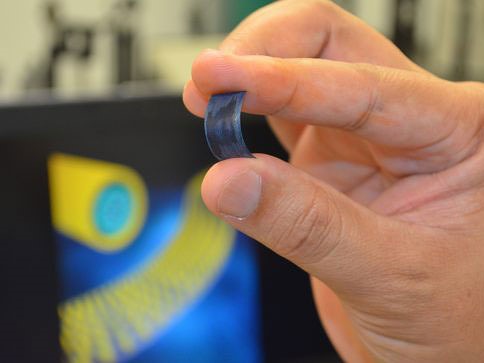University of Central Florida (UCF) Nanoscience Technology Center has made a breakthrough in battery technology.
30,000 cycles without degrading
Typically, a lithium-ion (Li-ion) battery can receive between 500-1500 charge cycles before it begins to show some wear. This means that if you run your phone through a full cycle ever day, your battery will begin to wear at about the 18 month mark.
The new tech from UCF promises 30,000 cycles before degradation has begun. In other words, your phone will be long overdue for an upgrade before the battery wears out.
Recently, airline shipping guidelines have put a serious hamper on the shipping of batteries not in equipment, which makes this technology much more attractive.
Supercharging
According to UCF, the new batteries will be able to charge literally within seconds. This makes Qualcomm Quick Charge 3.0 seem quite quaint by comparison, charging phones normally within 2 hours.
According to postdoctoral associate Nitin Choudhary, “If they were to replace the batteries with these supercapacitors, you could charge your mobile phone in a few seconds and you wouldn’t need to charge it again for over a week.”
Previous versions of the technology and how it’s done
This idea isn’t new. Scientists have known and have been studying using two-dimensional nanomaterials for quite awhile now, but these previous attempts generally presented little success due to difficulties with meshing the new tech materials with the old.

You may have heard of some of these attempts, such as with graphene, which is very difficult and costly to grow.
How it’s done
Using flexible supercapicators and a revolutionary chemical process, UCF has discovered a way to combine the new two-dimensional materials with current tech.
Principal investigator Yeonwoong “Eric” Jung states, “There have been problems in the way people incorporate these two-dimensional materials into the existing systems — that’s been a bottleneck in the field. We developed a simple chemical synthesis approach so we can very nicely integrate the existing materials with the two-dimensional materials.”
“If they were to replace the batteries with these supercapacitors, you could charge your mobile phone in a few seconds and you wouldn’t need to charge it again for over a week,” said team member Nitin Choudhary.
The supercapacitors created by Jung’s team are made up of millions of nanometer-thick wires, which are coated with two-dimensional materials. Super conductive cores allow for super fast electron transfer, which allows extremely fast charging. The two-dimensional coated shells give extremely high energy power densities.
When is supercapacitor nanotech coming
“It’s not ready for commercialization,” Jung said. “But this is a proof-of-concept demonstration, and our studies show there are very high impacts for many technologies.”
It’s the stuff of dreams, and is likely out of our hands for a while to come, but the concept has been proven to work, which is the first huge step.

Leave a Reply